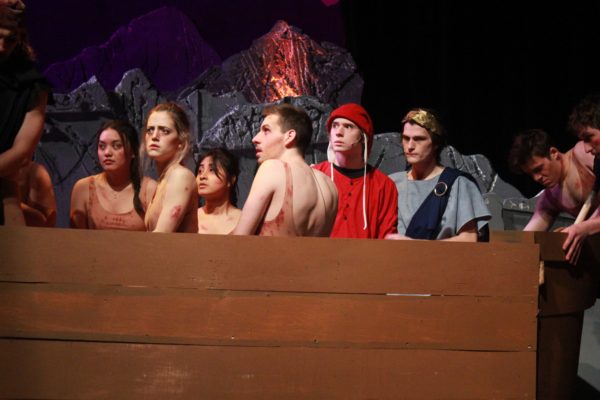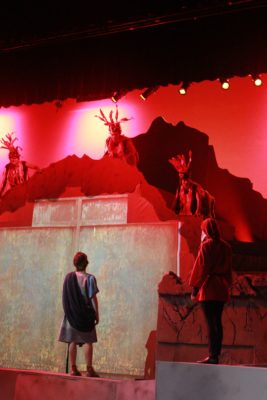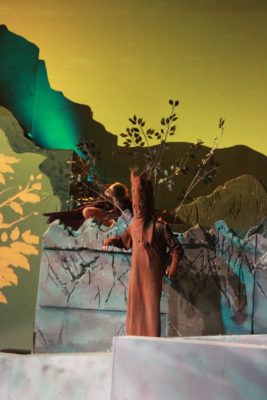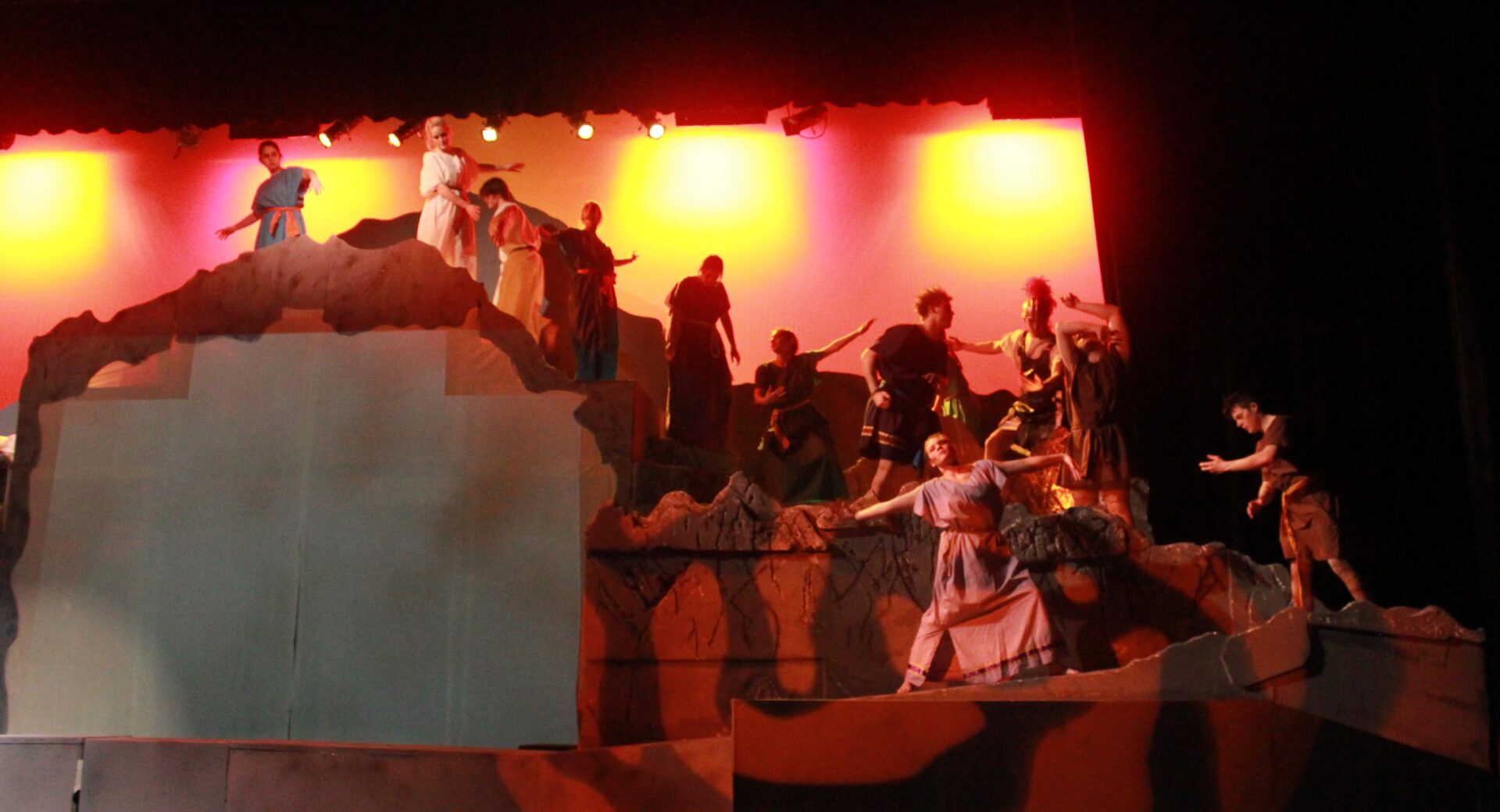The Newman University Theatre Department successfully took down the three-headed beast of “Dante’s Inferno” as a staged production. Among other things, costuming was one of the more intense aspects of the process.
Costuming a nearly three-hour production with dozens of characters from ancient Italy, as well as Roman, Greek and biblical stories, required a strong creative team, lots of resources and countless hours of work.
Director of Theatre Mark Mannette shared some of the thoughts that went into the creative process of costuming and the people involved with carrying it out.
“Clearly, we have the delineation of Dante and Virgil, where Dante needed to look like he was from his time period, Virgil needed to look like he was from his time period, and the two of them would be in the same costume the whole time,” explained Mannette. “Beyond that, we looked at having the sinners have a base costume that would convey the general idea of nudity because it worked in just about every context.”

To add to the sinners’ base costumes, costumer Christy Railsback and puppeteer Stephen Chipps made everything from tree costumes to a shoulder dragon and a pair of functioning angel wings.
Mannette said, “We knew that many of the sinners were going to be playing other roles at various times. We said that to keep it relatively simple, they could put something on and take it off quickly.”
Keeping speedy costume changes in mind, in addition to the imaginative elements of the story, Railsback and Chipps had their work cut out for them from the beginning.
“Mark let me know last fall that he was planning to do this,” said Railsback. “He gave me the script early December, so I had been thinking about it all through break and doing lots of research. I looked at lots of classical literature and paintings, knowing that Dante lived in the early 1300s. I looked at hundreds of things — thousands maybe — and the hardest part is to take all of this information and condense it down to choosing what is the best look for the Newman stage, what can I reasonably get done in the length of time I have and the amount of money I have to spend.”
Beyond characteristic accuracy, Railsback cares immensely about the artistic appearance, as well as how the performers look and feel in their costumes.
“I like to know who the actor is that’s going to play the part so that while I’m creating the costume, I can visualize this person in it. I have to consider how everything looks together on the stage if there’s a consistency of look — how the colors look together, the textures, the flow of the fabric.”

In her work, Railsback captures the essence of a given character and empowers the performer to personify that particular person (or beast, as the case may be).
“The furies were an example. I wanted them to look like flames, so they had the flame headpiece and their costumes were all this shiny, fluttery red and yellow to make it look like they were on fire. I wanted the [harpy] wings to be particularly impressive because they were in silhouette at the top.”
Chipps’ work complimented Railsback’s work and added more elements of style and spectacle.
“There was kind of a division of costumes. Steven Chipps came in to do the masks and puppets. He constructed the basic framework for the wings, centaurs and the masks, then the students put in many hours putting the fur on the centaurs and the feathers on the wings.”
In addition to stories from time’s past, some of Railsback’s inspiration was drawn from more modern sources.

“An example of my creative process on a costume would be the tree. I had to work with the limits of the tree needing to talk, the harpies needed to eat leaves off the top of the tree, Austin (Schwartz) had to get on and off the stage without injuring himself and he had to be able to see out of this costume. So I thought a lot, trying to figure out which direction to go, and I finally got my inspiration: the tree is sort of a cross between an Ent from Lord of the Rings and Groot (from ‘Guardians of the Galaxy’).”
Railsback worked incredibly hard to make the performers look good and feel good on stage in order to enhance the production.
“The most rewarding part for me is when an actor puts on their costume and smiles, and says, ‘I love it.’ ”


